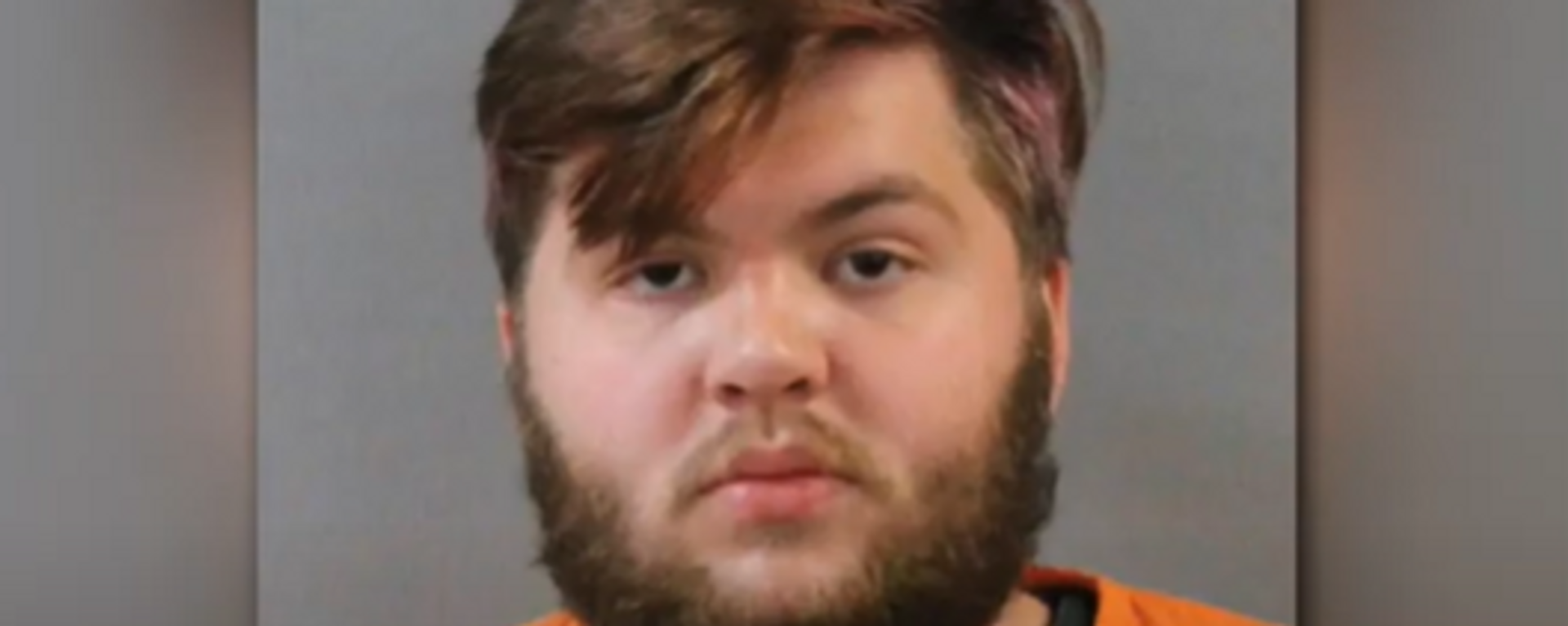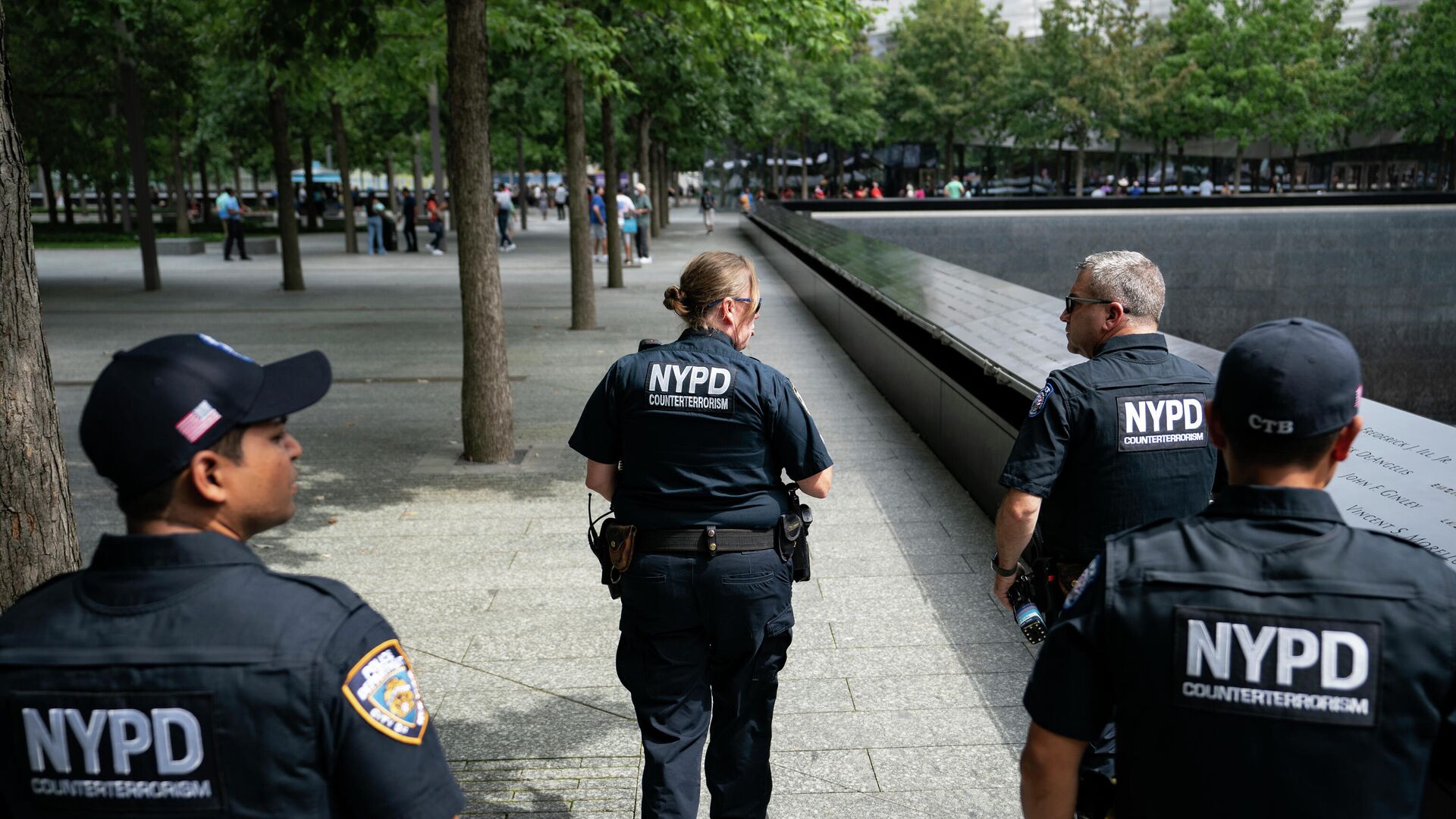https://sputnikglobe.com/20220905/body-cam-footage-of-rameek-smiths-shooting-by-police-officers-released-questions-remain-1100372298.html
Body Cam Footage of Rameek Smith’s Shooting by Police Officers Released, Questions Remain
Body Cam Footage of Rameek Smith’s Shooting by Police Officers Released, Questions Remain
Sputnik International
On May 10, 2022, two police officers confronted Rameek Smith, who after a pursuit was shot to death by the police. On September 2, the New York Police... 05.09.2022, Sputnik International
2022-09-05T02:58+0000
2022-09-05T02:58+0000
2022-09-05T02:58+0000
americas
nypd
police
police killings
https://cdn1.img.sputnikglobe.com/img/07e5/0b/14/1090890219_0:15:3072:1743_1920x0_80_0_0_eef782741b42330396ccc411fb948c81.jpg
Police body cam footage released by the New York City Police department on Friday concerning the shooting and killing of Rameek Smith is bringing up questions about the police account of the shooting that occurred in May.According to the NYPD, two police officers, Dennis Vargas and John Echevarria were driving in an unmarked police car on May 10, when they attempted to approach Smith. Smith fled and Vargas chased him on foot while Echevarria followed in the vehicle.The report then states that Smith turned around and fired two shots at Vargas, which resulted in the police officers returning fire and killing Smith, who was 25 years old. Police say they recovered a gun on the scene that had been stolen in Richmond, Virginia.Vargas was reportedly struck in the arm by a bullet. He is expected to make a full recovery and was released from the hospital the next day.Smith, who was released on his own recognizance for a previous gun charge, was quickly used by New York City Mayor Eric Adams and New York City Police chief commissioner Keechant Sewell as evidence that bail reform laws that were passed in 2019 are making the city unsafe.It is not known why officers first approached Smith and the recently released body cam footage does not offer any answers in that regard. The first 60 seconds of body cam footage is without sound, something that makes determining what happened more difficult.In the video released by police, the officers’ vehicle approaches Smith. When Vargas exits the car, Smith flees and Vargas gives chase. The two round a corner, and then, less than a second before Vargas draws his firearm and fires at Smith, the sound turns on. He unleashes at least nine gunshots.In Echevarria’s body cam footage, the same event can be seen from another point of view. Echevarria followed Vargas and Smith in his car, before getting out and taking several shots at Smith who was still fleeing. Smith goes down after Echevarria fires at him, but it is unknown which – or if both – of the officers struck Smith. He died of a gunshot wound to the head, according to reports.The video, which was edited by the police department, abruptly cuts off after Smith was shot.Sputnik News analyzed the video frame by frame and in slow motion. At no point is there a gun held by Smith that is visible. Smith also does not appear to turn around, as was mentioned in the police report. There are also no muzzle flashes coming from Smith’s person. Every gunshot that can be heard in the video appears to come from the police officer’s guns, however, there is one gunshot immediately after the sound is activated, which origins are unclear.The footage does not appear to show Vargas being hit by the bullet, and it cuts off well before police officers say they recovered a weapon at the scene.Smith, who was the father of two young children, had been referred to a mental health court after being evaluated by a court-appointed psychiatrist following his 2020 arrest. The Legal Aid Society, which represented Smith in that case, released a statement after his death, slamming Adams for his characterization of Smith and for blaming bail reforms. It also notes that Smith complied with his legal obligations, showing up for his court dates and participating in the mental health program.“Mayor Adams and the New York City Police Department’s baseless claims that this case involves bail reform is patently incorrect and exposes the Administration’s continued refusal to comprehend the scope and benefits of these reforms.”Bronx District Attorney’s Office spokesman Oren Yaniv told Gothamist that the charge Smith faced was a bail-eligible offense and the judge decided to release him on his own recognizance. Prosecutors had asked for a $50,000 bail.Both Vargas and Echevarria are part of the new Neighborhood Safety Team implemented under Adam’s administration. They have been tasked with removing illegal guns from the streets and arresting those suspected of committing violent crimes. They drive in unmarked cars and wear modified NYPD uniforms, leading some to suspect Smith did not know who he was running from.Officer Vargas has faced 39 complaints during his eight-years with the NYPD, including 12 substantiated claims. Echevarria has faced 12 complaints against him in his nine-years of service, including two substantiated claims. One claim against Echevarria has been closed but is under pending litigation and includes alleged aggressive force.
https://sputnikglobe.com/20220904/man-arrested-in-connection-to-billionaire-heiress-kidnapping-fletcher-remains-missing-1100369573.html
https://sputnikglobe.com/20220905/teen-dad-leaves-one-year-old-son-to-die-in-hot-car-charged-with-murder-1100371039.html
americas
Sputnik International
feedback@sputniknews.com
+74956456601
MIA „Rossiya Segodnya“
2022
News
en_EN
Sputnik International
feedback@sputniknews.com
+74956456601
MIA „Rossiya Segodnya“
Sputnik International
feedback@sputniknews.com
+74956456601
MIA „Rossiya Segodnya“
nypd, police, police killings
nypd, police, police killings
Body Cam Footage of Rameek Smith’s Shooting by Police Officers Released, Questions Remain
On May 10, 2022, two police officers confronted Rameek Smith, who after a pursuit was shot to death by the police. On September 2, the New York Police Department released body cam footage of the incident, but what happened still remains unclear.
Police body cam footage released by the New York City Police department on Friday concerning the shooting and killing of Rameek Smith is bringing up questions about the police account of the shooting that occurred in May.
According to the NYPD, two police officers, Dennis Vargas and John Echevarria were driving in an unmarked police car on May 10, when they attempted to approach Smith. Smith fled and Vargas chased him on foot while Echevarria followed in the vehicle.
The report then states that Smith turned around and fired two shots at Vargas, which resulted in the police officers returning fire and killing Smith, who was 25 years old. Police say they recovered a gun on the scene that had been stolen in Richmond, Virginia.
Vargas was reportedly struck in the arm by a bullet. He is expected to make a full recovery and was released from the hospital the next day.

4 September 2022, 21:26 GMT
Smith, who was released on his own recognizance for a previous gun charge, was quickly used by New York City Mayor Eric Adams and New York City Police chief commissioner Keechant Sewell as evidence that bail reform laws that were passed in 2019 are making the city unsafe.
“Under normal circumstances you would see a decrease in crime in the city, but the same criminals are continuing to come out in our streets committing violence over and over again. The city deserves better,”
Adams said.
It is not known why officers first approached Smith and the recently released body cam footage does not offer any answers in that regard. The first 60 seconds of body cam footage is without sound, something that makes determining what happened more difficult.
In the video released by police, the officers’ vehicle approaches Smith. When Vargas exits the car, Smith flees and Vargas gives chase. The two round a corner, and then, less than a second before Vargas draws his firearm and fires at Smith, the sound turns on. He unleashes at least nine gunshots.
In Echevarria’s body cam footage, the same event can be seen from another point of view. Echevarria followed Vargas and Smith in his car, before getting out and taking several shots at Smith who was still fleeing. Smith goes down after Echevarria fires at him, but it is unknown which – or if both – of the officers struck Smith. He died of a gunshot wound to the head, according to reports.
The video, which was edited by the police department, abruptly cuts off after Smith was shot.
Sputnik News analyzed the video frame by frame and in slow motion. At no point is there a gun held by Smith that is visible. Smith also does not appear to turn around, as was mentioned in the police report. There are also no muzzle flashes coming from Smith’s person. Every gunshot that can be heard in the video appears to come from the police officer’s guns, however, there is one gunshot immediately after the sound is activated, which origins are unclear.
The footage does not appear to show Vargas being hit by the bullet, and it cuts off well before police officers say they recovered a weapon at the scene.
Smith, who was the father of two young children, had been referred to a mental health court after being evaluated by a court-appointed psychiatrist following his 2020 arrest. The Legal Aid Society, which represented Smith in that case, released a statement after his death, slamming Adams for his characterization of Smith and for blaming bail reforms. It also notes that Smith complied with his legal obligations, showing up for his court dates and participating in the mental health program.
“Rameek Smith was a father and son. His tragic and untimely killing is devastating. Mr. Smith was released from New York City Department of Correction custody on a non-violent felony in March 2020, on consent of the Kings County District Attorney’s office and the Court. Since that time, after being accepted to Mental Health Court, Mr. Smith complied with all of his obligations, attending every court appearance and consistently participating in programming to address his needs.”
“Mayor Adams and the New York City Police Department’s baseless claims that this case involves bail reform is patently incorrect and exposes the Administration’s continued refusal to comprehend the scope and benefits of these reforms.”

5 September 2022, 01:12 GMT
Bronx District Attorney’s Office spokesman Oren Yaniv
told Gothamist that the charge Smith faced was a bail-eligible offense and the judge decided to release him on his own recognizance. Prosecutors had asked for a $50,000 bail.
Both Vargas and Echevarria are part of the new Neighborhood Safety Team implemented under Adam’s administration. They have been tasked with removing illegal guns from the streets and arresting those suspected of committing violent crimes. They drive in unmarked cars and wear modified NYPD uniforms, leading some to suspect Smith did not know who he was running from. Officer Vargas has faced
39 complaints during his eight-years with the NYPD, including 12 substantiated claims. Echevarria has faced
12 complaints against him in his nine-years of service, including two substantiated claims. One claim against Echevarria has been closed but is under pending litigation and includes alleged aggressive force.




